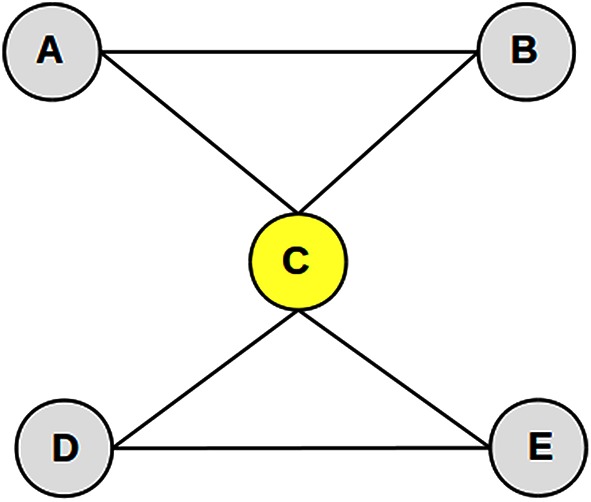Figure 1.

A toy network showing the calculation of network topological features. We consider node C (yellow node) as an example to show the calculation of the network topological features. The degree centrality (DC) of node C is 4 because it has 4 edges connecting with nodes A, B, D, and E. The betweenness centrality (BC) of node B is the number of times that node B acts as a bridge along the shortest paths between two other nodes. There are six shortest paths between all other pair of nodes (ACD, ACE, AB, BCD, BCE, DE) of which node C acts a bridge 4 times. Then, BC of node C is 4/6 = 0.66. The closeness centrality (CC) of node C is the reciprocal of the average distance from node C to other nodes. Therefore, CC of node C is 1. The clustering coefficient (CCo) of node C is calculated as the proportion of actual connections among its neighbors (A, B, D, and E) that is, in this case, 2, and the number of all possible connections among its neighbors (in this case, 6). Therefore, CCo of node C is 2/6 = 0.33.
